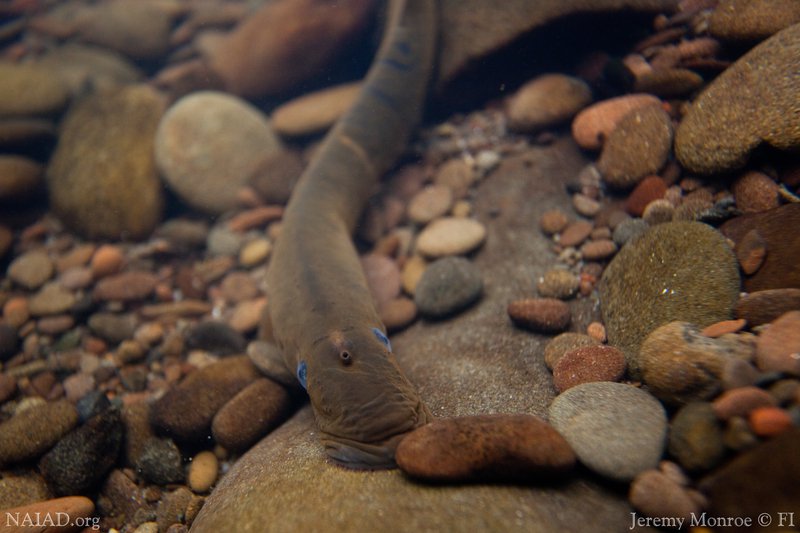
Pacific Lamprey, prized by Northwest tribes along with salmon, are considered an important species in the Council’s Columbia River Basin Fish and Wildlife Program, which calls for action to improve lamprey migration success, survival, and growth.
At its September meeting, Lamprey Research Biologist Ralph Lampman with the Yakama Nation Fisheries Pacific Lamprey Project briefed Council members on their efforts to restore this ecologically and culturally important species to levels that will provide meaningful harvest throughout its accustomed areas.
They are, noted Lampman, the “bacon cheeseburger of the aquatic world,” and a key food source for other fish and birds providing high levels of vitamins, minerals, and fatty acids. For the basin’s tribes, they are a cornerstone species on par with salmon for their cultural and nutritional significance. Like salmon, they migrate as juveniles to the ocean and return to spawn in freshwater streams.
Pacific Lamprey, which are prehistoric, resilient eel-like fish, have been in sharp decline since the building of large dams in the basin in the mid-twentieth century. As a result, their ability to migrate has been severely impaired, even with fish ladders and bypass systems designed for adult and juvenile salmon. There is evidence that many dams with fish ladders designed to pass salmonids do not effectively pass lampreys. Many dams with fish ladders for salmonids only pass about 50 percent of adult Pacific lamprey, and little is known about juvenile lamprey passage and their overall survival.
As Lampman described, the lamprey project began translocating adults from lower Columbia dams in 2012 to streams in the Yakima Basin to evaluate the effectiveness of this strategy. About 5 years later, biologists reported a large increase, up from about a maximum of 80 to about 1,500 adults counted at Lower Yakima River (Prosser Dam) annually. Juvenile numbers also saw a similar large increase in numbers starting around the same time.
Other aspects of the project include adult and juvenile passage improvement; parentage-based tagging to study the survival and limiting factors affecting lamprey; and artificial propagation to 1) provide study fish, 2) aid research on the limiting factors of the early life stage lamprey, and 3) supplement subpopulations. One area of future focus within the supplementation program will be increasing the efficiency and economy of hatchery programs while also ensuring they are good surrogates for wild fish.



